History
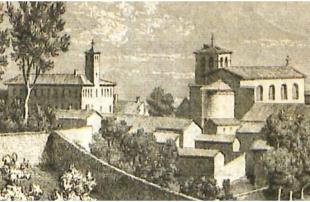
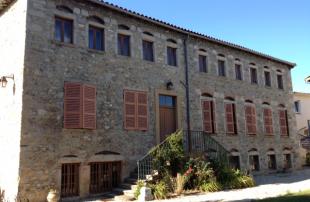
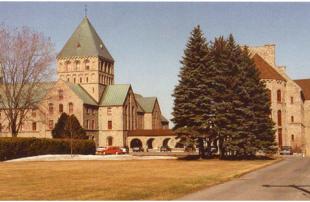
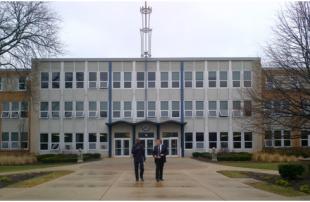
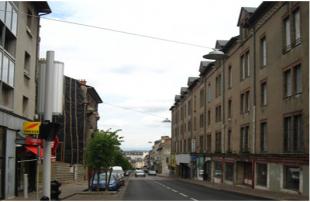
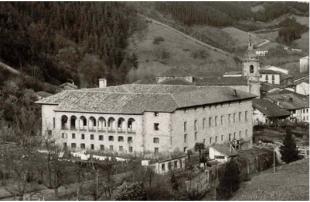
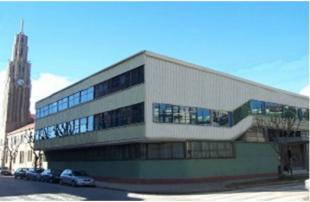
ONE HUNDRED AND EIGHTY YEARS OF HISTORY
At the death of its founder, the Congregation numbered between 250 and 300 members, including some 50 in Canada, who constituted four provinces: Vourles, Saint-Flour, Rodez, and Canada. The initial proposal to associate lay catechists with the congregation did not come to fruition. Nevertheless, Father Querbes continued to hope that those “secular catechists” would one day become a reality.
In France, the typical Cleric of Saint Viator served in small rural parishes, where he was, according to the wishes of the founder, “the cantor, sacristan, catechist, table-mate and companion” of the priest and, of course, the principal of the school. The Province of Canada, from its earliest years, went in a different direction, directing primary schools, as well as a secondary school; accepting responsibility for a parish; and creating an Institution for the Deaf.
The “French” Congregation
In France, after the death of Father Querbes (1859) and up until about 1880, development was rapid and consistent. Afterwards, as the country entered an era of political turbulence, the growth rate slowed down for 15 years. Religious congregations that, up until that time, could direct public communal schools had to abandon them and to open parish schools, which were free but poor. Religious were obliged to do military service. Those entering novitiates became fewer and fewer. In 1900, there were approximately 500 French religious out of the 760 religious in the entire Congregation.
In Canada, the development of the Congregation proceeded based upon apostolic works that, while not numerous, were solidly implanted. In 1897, a half-century after its founding, the Canadian Province was composed of 215 religious. In 1865, three Canadian religious founded a school in Bourbonnais, Illinois (U.S.A.). A novitiate was opened and, in 1882, the religious of the United States formed the Province of Chicago. At the end of the century, the Chicago Province was composed of some 40 religious.
Until the beginning of the 20th century, the Congregation presented what might be called a “French face,” with the religious of France forming the predominant group. Except for the Chicago Province, the other provinces were engaged in apostolic works that fit into the same framework: elementary schools, some of which were small boarding schools, represented the principal commitment of the Congregation; several secondary schools, which involved a small number of religious; social works (orphanages in France, Institution for the Deaf in Montréal); and sacristan duties in several parishes. Small or medium-sized local communities predominated, constituted for the most part of religious brothers.
The Tempest
In May, 1903, in France, the government decreed the closing of 11,000 schools and hospitals administered by religious congregations.
Within the space of two months, the Clerics of Saint Viator of France saw their provincial houses, juniorates, novitiates, and residences for retired religious closed and their personnel dispersed. All primary and secondary schools were disturbed. Many of them disappeared. All properties of the Congregation were seized by the State and lost forever. Communities fell apart. Certain religious went before tribunals and were sentenced to prison. Other religious, especially those who were somewhat older, left for other countries.
In the three provinces, people had seen the storm coming, but no one thought that it would be so severe. Belgium became a possible place of refuge for the religious of the Province of Vourles, while Spain played the same role for those of the Province of Rodez. With the Province of Canada having indicated that, in case of necessity, it would welcome French confreres, 31 accepted Canada’s hospitality.
The provinces tried to re-establish themselves little by little. All the schools were now free and run by “laicized” personnel, to use the expression of that time. Certain “business enterprises” furnished some resources (gardens, farming operations, tailor shop for religious garb, and sale of objects of piety). In Brussels (Belgium) and Vitoria (Spain), new schools were opened. Just as a bit of progress was being made, World War I broke out and people were once again uncertain of what the future would bring. Almost half of our French religious were drafted, with 29 of them being killed in battle. Our Congregation was literally decimated. And those religious were young men.
The provinces that came forth from those 15 or 20 challenging years were exhausted. That period corresponded to a weakening – nay, to the entire disappearance – of the French influence upon the entire Congregation. By 1907-1908, the number of North American religious was greater than the number of European religious.
The “Canadian” Congregation
From the 1920s until the 1960s, the number of Canadian religious grew steadily and eventually constituted two-thirds of the Congregation’s membership (1146 out of 1760 in the year 1960). That dynamism made it possible to develop several well-reputed classical secondary schools (in Joliette, Rigaud, and elsewhere), as well as specialized institutions for the hearing impaired (in Montréal and Québec City) and for the blind (in Montréal). It brought religious to the east toward the mouth of the Saint Lawrence River; to the north toward the regions of Abitibi and Témiscamingue; and to the west toward the Province of Manitoba and even further afield, since several religious, in 1931, went abroad to found a school in Manchuria. The Canadian Province had to be divided up, for a first time in 1938 (Montréal and Joliette) and for a second time in 1955 (Abitibi and Saint Lawrence). Over the years, Canadian religious implanted the Congregation in Japan (1948), Taiwan (1953), Peru (1959), and Haiti (1965).
The Province of Chicago developed in a way that was specific to itself and that put its highly qualified personnel at the service of large educational institutions, universities, chaplaincies, and parishes. The Chicago Province founded a school in Bogotá (Colombia) in 1961.
Coming forth from the major difficulties that had struck them, the French provinces re-organized themselves little by little. Their apostolic commitments remained in consonance with their past history. That made it possible to become involved with parishes and to collaborate with the diocesan clergy. In 1955, French religious founded a school in Bouaké (Ivory Coast).
The foundational beginnings in Spain proceeded slowly at first, but more solidly after 1920. In spite of the interruptions caused by the Civil War (1936-1939), the local communities in Spain formed a vice-province in 1937; ten years later, they became a full-fledged province. Starting in 1957, Spain founded several establishments in Chile.
Something is in the Air
Vatican Council II brought the breath of fresh air that Pope John XXIII wanted and made it possible to better situate religious life in the Church. But, added to the updating desired by the Council, renewed emphasis was placed on the questions and challenges that were present everywhere in the late 1960s. A crisis of institutions, a break-down of communities, and a large number of departures brought forth much soul-searching about the identity of the Cleric of Saint Viator.
Nevertheless, reflections that began at the 1969 and 1972 General Chapters and that were subsequently proposed to the entire Congregation, pastoral leadership that was concerned about people, and the writing of a renewed Constitution (1978) made it possible to slowly but surely re-discover the essential elements of the mission and the religious life of the Clerics of Saint Viator.
Over the course of the renewal process, lay associates were very naturally re-discovered. “In conformity with an idea cherished by our Founder,” our constitution states, “our Congregation agrees to accept other persons who desire to participate in its mission, its spiritual life, and its community life.” Thus the stepping stones laid down by Father Louis Querbes made it possible, 150 years later, to add the complementary element that he had felt to be indispensable for his proposal. Lay men and women now share the mission of the Congregation, live out its spirit, and participate, to a certain degree and in conformity with models specific to different countries, in the life of the local communities.
And Now
“Announcing Jesus Christ and his Gospel and raising up communities where faith is lived, deepened, and celebrated” is the way that our constitution translates today the mission of the Clerics of Saint Viator, which Father Querbes defined as “the teaching of Christian doctrine and the service of the holy altar.” In his time, the dynamism of our Founder launched the Catechists of Saint Viator according to that manner of service, especially with the young and in close collaboration with the laity and the diocesan clergy.
At the present time, as stated by the 1984 General Chapter, in faithfulness to the intentions of Father Querbes, that mission doubtlessly sends us forth toward all people, but principally toward needy young people, whether in schools or outside of schools, in parishes or in new Christian communities, in non-Christian places or nominally Christian places.” New commitments were accepted, at the dawn of the 21st Century, in Belize, Burkina Faso, Honduras, and Bolivia. The Viatorian Community is presently composed of 412 religious and 330 lay associates. It has provinces and foundations in 13 countries



